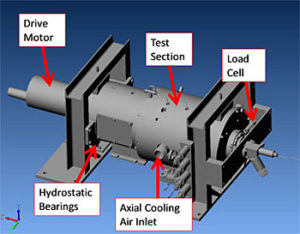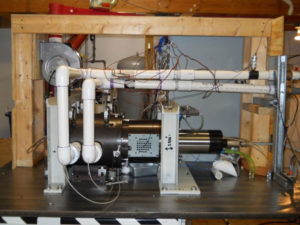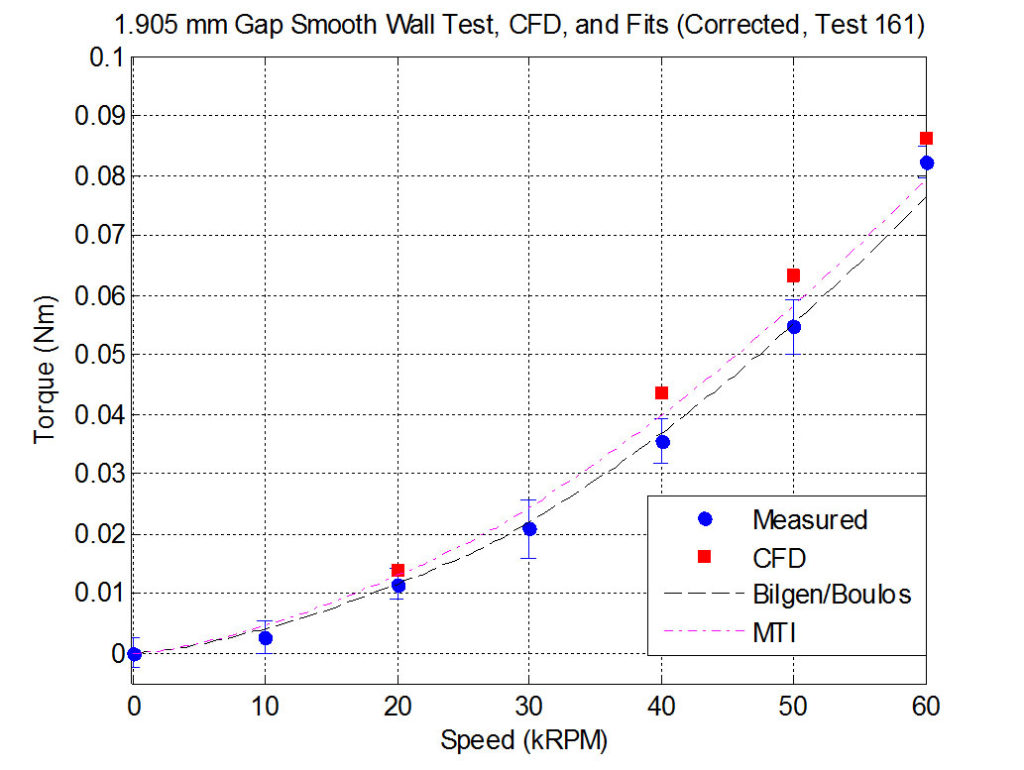High Speed Electrical Machinery Windage
In 2012, Xdot Engineering and Analysis completed a Phase I/Phase II SBIR effort funded by the US Air Force. This goal of the project was to develop methods of reducing windage loss in high speed electrical machinery in the range of 50 kW to 200 kW. The project consisted of an extensive Computational Fluid Dynamic (CFD) analysis and optimization effort combined with rig testing in a new test rig to generate an experimental validation dataset and demonstrate a windage loss reduction technique.
Overall, the effort was successful. Major accomplishments include:
- Production and commissioning of a new windage loss test rig capable of accurate, high resolution rotor windage torque measurements in relevant test articles at speeds up to 60,000 rpm.
- Measurement of windage torque for test articles with air gaps of 0.635, 1.270, and 1.905 mm over the speed range of 10,000 to 60,000 rpm, including:
- Smooth wall stator test articles versus a smooth surface rotor.
- Recessed wall stator test articles versus a smooth surface rotor (recesses intended to represent winding slots).
- Development of an automated CFD analysis module to analyze windage torque for relevant geometries.
- Prediction of windage torque for baseline cases and validation of the predictions against experimental data.
- Exploration and optimization of several approaches to decreasing the windage torque by as much as 20 percent relative to a baseline condition.
- Demonstration of one of these approaches in hardware.
- Exploration of the effects of several key design windage related design features.
The major outcomes of this effort are:
- Production of a relatively easy to use ANSYS/CFX analysis module for predicting windage torque in small gaps representative of the rotor-stator gap in this class of machinery.
- Production of a unique, 60,000 rpm capable, high resolution windage loss measurement test rig.
- Production of a new database of experimental measurements of windage torque for relevant test articles.
- Prediction of several ways to reduce or minimize windage power loss and parameters that can be varied to affect windage loss during design.



